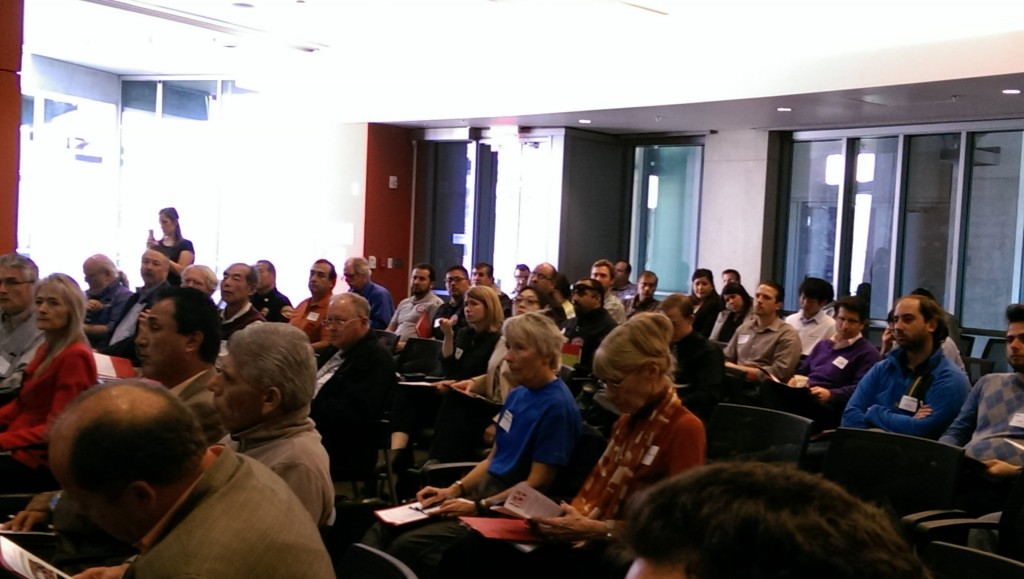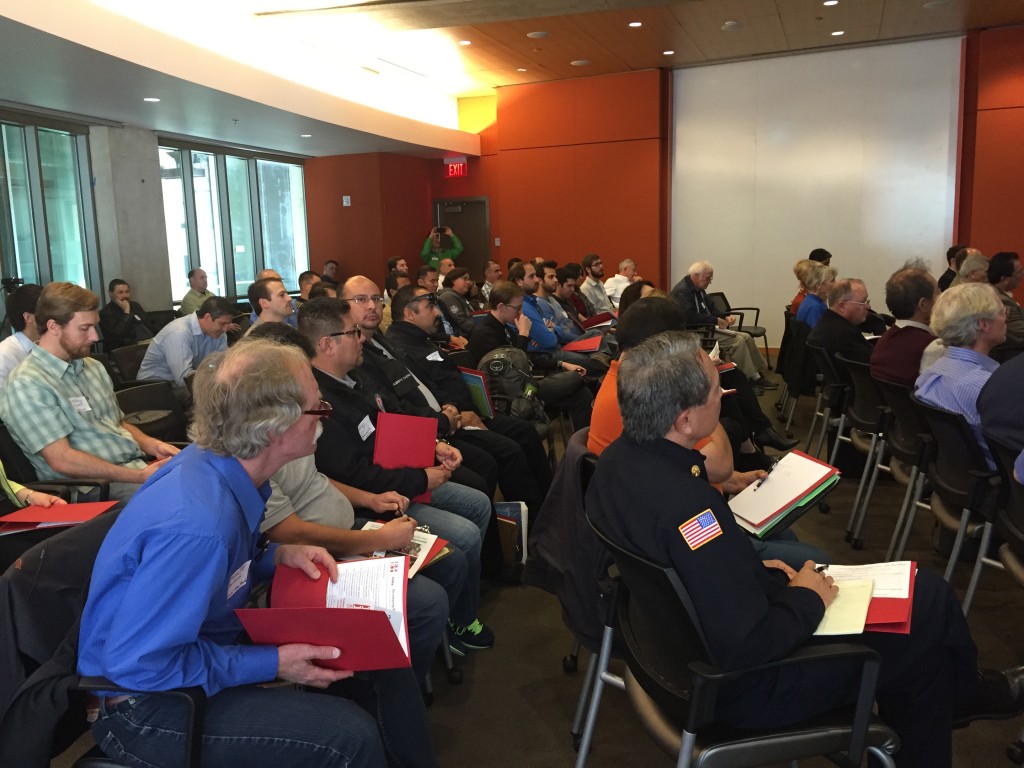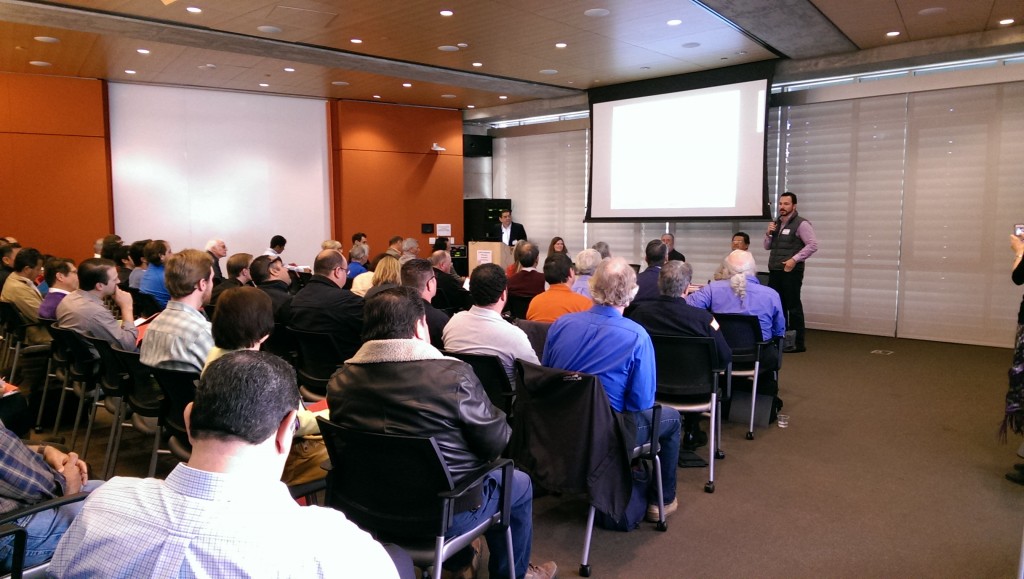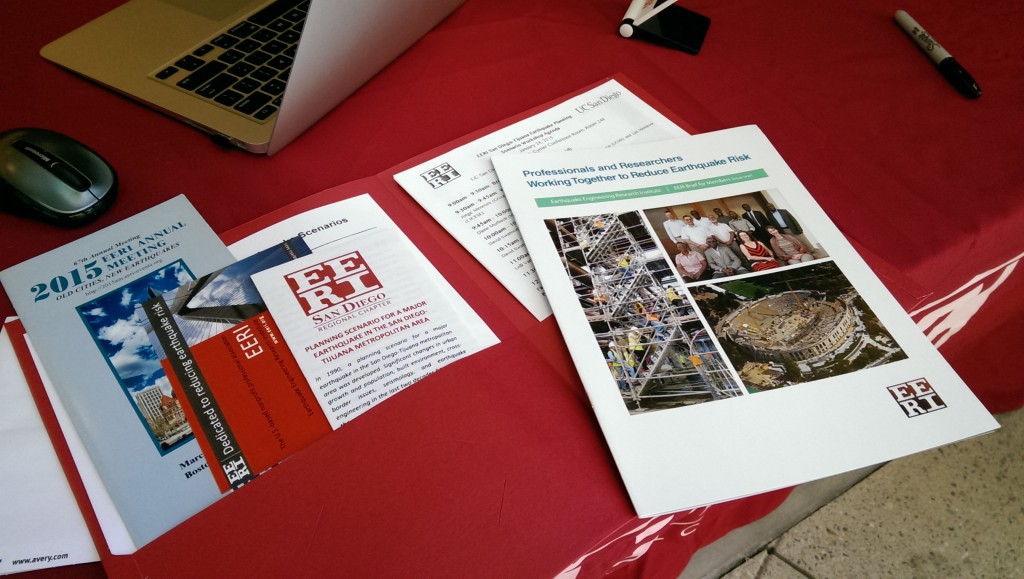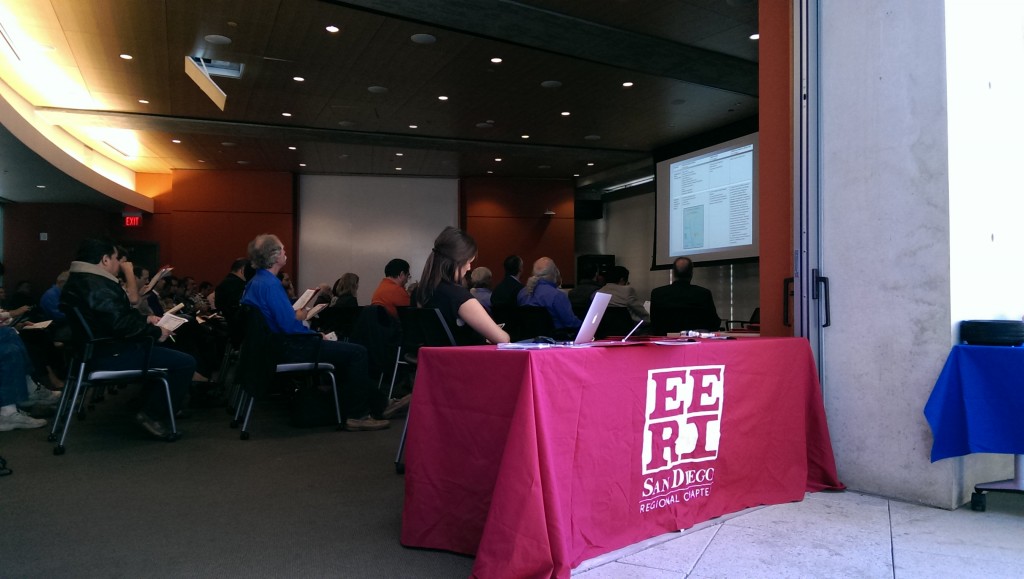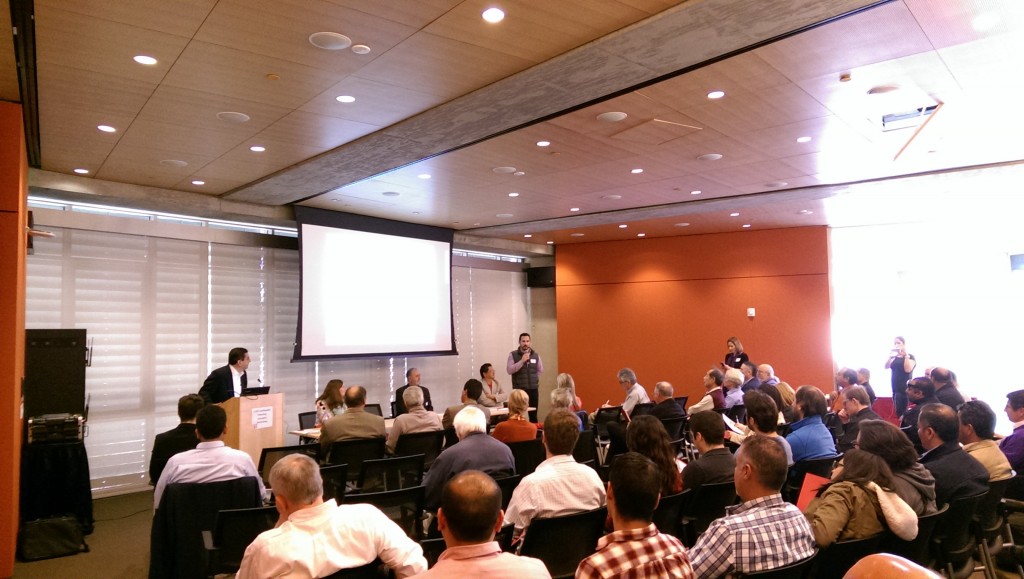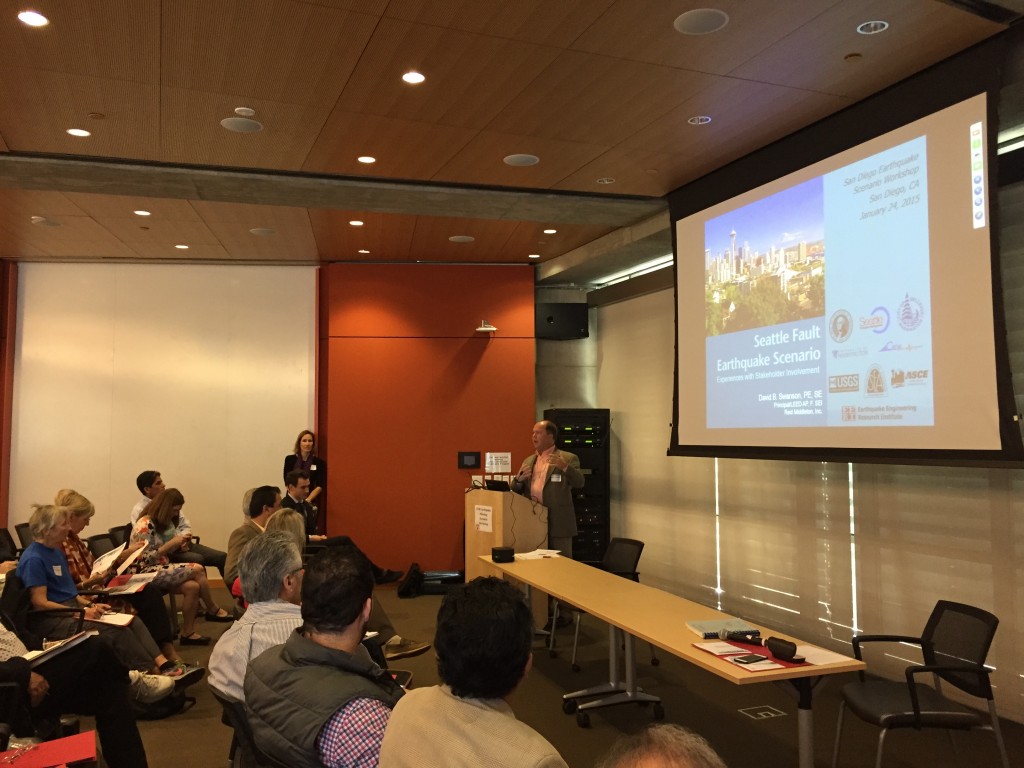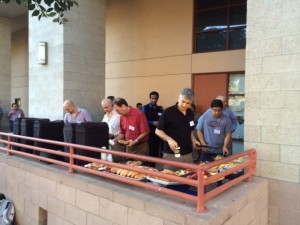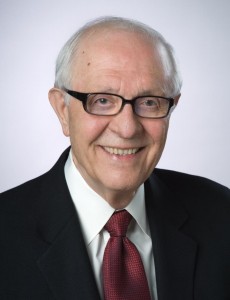“Seismic Settlements”
Speakers and Abstracts
Professor Youssef Hashash
University of Illinois at Urbana-Champaign
Numerical Modeling and Simulation of Seismic Settlements in Dense Sands
Abstract: The seismic performance of structures constructed on compacted, dense sands depends on the cyclic shear stress – shear strain – volumetric strain response of the underlying soil. Dense natural or compacted coarse-grained soils are not expected to liquefy during an earthquake. However, a thick granular deposit may experience accumulated volumetric strains due to seismic loading resulting in nontrivial total and differential settlements of structures. In these situations, reliable estimations of seismic settlements are essential for assessing the effects of earthquakes on the safety and serviceability of the structures.
This presentation describes results of series of numerical simulations using nonlinear three dimensional finite element analyses, to estimate the seismic settlements measured with depth in dynamic centrifuge tests conducted on dense, saturated sand under multi-directional seismic loading conditions with and without structure (free-field). The numerical simulations use a general, three dimensional effective stress soil model (I-soil) to describe important aspects of dense sands including small-strain nonlinearity, hysteretic damping, shear induced volumetric (contraction – dilation) behavior in terms of strains and excess porewater pressures, and effective mean stress dependency of the stress – strain behavior. I-soil uses distributed element plasticity (DEP) framework and does not require kinematic hardening rule. Thus, the mathematical formulation and numerical implementation is simple and efficient. The model is implemented in a transient dynamic finite element analysis software that uses explicit time integration. Model validation and input calibration utilized results from an extensive laboratory testing program (using cyclic direct simple shear testing), empirical relations developed for modulus reduction and damping curves, and one-dimensional nonlinear site response analyses for free-field centrifuge tests. The calibrated model is, then, used in 3-D SSI simulations. The results show that the simulations reasonably represent settlements measured under seismic loadings having various intensity levels for with and without structure cases. In addition, run times for full scale, 3-D SSI analyses are on the order of a couple of hours per broad band ground motion.
Professor Scott M. Olson
University of Illinois at Urbana-Champaign
Semi-empirical estimates of shaking-induced settlement in saturated coarse-grained soils with or without a structure
Abstract: Settlement of saturated, sandy soils during earthquakes is a pervasive problem, particularly when liquefaction is triggered. Structures are particularly vulnerable to damage resulting from shaking-induced settlements, as recently demonstrated by the dramatic economic losses resulting from shaking- and liquefaction-induced settlements of multi-story frame structures and one- to two-story residences during the 2010-11 Canterbury earthquake sequence. Despite the magnitude of the problem, empirical and semi-empirical methods to estimate shaking-induced settlements largely have been limited to free-field conditions (i.e., outside of the soil region affected by normal and shear stresses imposed by a structure) under idealized undrained or drained conditions. A few recent studies have focused on shaking-induced settlements of structures, and provide valuable insights for understanding the influence of structures on these settlements.
In this presentation, we will describe the development and validation of new, consistent semi-empirical models for estimating shaking-induced vertical strains and settlements in the free-field and below structures. The new models focus on partially drained conditions that commonly occur during earthquake shaking, use shear wave velocity or penetration resistance to capture soil state and compressibility, and use various intensity measures to capture seismic demand. Specifically, we simplified the calculations into three components: (1) settlement during shaking; (2) reconsolidation settlement after shaking; and (3) a punching/rocking mechanism when buildings are present. The models apply to a wide range of realistic field conditions involving liquefiable and non-liquefiable saturated sandy soils with shear wave velocity ranging from about 50 to 300 m/s and Arias intensities ranging from about 0.1 to 3.0 m/s. Data for the models were obtained from a dynamic centrifuge testing program (involving uni- and multi-directional shaking) and a thorough review of 1g shaking-table tests, dynamic centrifuge tests, and well-documented free-field and building settlement case records.
Bio: Scott M. Olson, PhD, PE is an associate professor in the CEE Department at the University of Illinois, where he joined the faculty in 2004. Prior to joining the faculty at Illinois, Scott worked in practice for about seven years for Woodward-Clyde Consultants and URS Corporation. Prof. Olson has researched static and seismic liquefaction for over 20 years, and has been involved in dozens of research and consulting projects involving geotechnical earthquake engineering including seismic hazard; site response; liquefaction; slope stability, and ground modification. Dr. Olson’s other research interests include laboratory/centrifuge testing, paleoliquefaction, insitu testing, geohazard analysis, and soil-foundation-structure interaction. From these activities, Scott has published over 120 journal papers, conference articles, and reports, and has received numerous awards for his research and teaching. Scott serves in various capacities for the Geo-Institute, USUCGER, and the Transportation Research Board (TRB), and remains active in consulting with clients in the civil infrastructure, power, transportation, and mining industries. He is a licensed professional engineer in Missouri.
Professor Shideh Dashti
University of Colorado Boulder
Physics-Informed Semi-Empirical Probabilistic Models for Predicting Building Settlement and Tilt on Liquefiable Ground
Abstract: This presentation introduces predictive models for the seismic settlement and tilt of shallow-founded structures on liquefiable ground based on an integrated observational, experimental, numerical, and statistical approach. Effective liquefaction mitigation requires an improved understanding of the consequences of liquefaction on structures. The state of practice typically involves estimating building settlement using empirical procedures for free-field conditions, which have been shown to be unreliable and inappropriate through previous case histories and physical model studies. To address this problem, first, a series of centrifuge experiments were performed to evaluate the dominant mechanisms of deformation near shallow-founded structures. Second, experimental results were used to evaluate the predictive capabilities of 3D, fully-coupled, nonlinear, dynamic finite element analyses of soil-structure systems in OpenSees. Third, a numerical parametric study (exceeding 63,000 simulations) was used to identify the most optimum Intensity Measures for permanent building settlement and tilt as well as the functional form of predictive models. And finally, a case history database helped validate and refine the models, accounting for field complexities not captured numerically or experimentally. This integrative approach yielded a set of procedures that are the first to consider variations in soil layering and geometry, foundation and structure properties (in 3D), soil-structure interaction, and total model uncertainties—all of which are necessary to realize the benefits of performance-based seismic design in evaluating and mitigating the liquefaction hazard.
Bio: Dr. Shideh Dashti is a faculty member in Geotechnical Engineering and Geomechanics at the University of Colorado Boulder (CU). She obtained her undergraduate degree at Cornell University and graduate degrees at the University of California, Berkeley. She worked briefly with ARUP (New York City) and Bechtel (San Francisco) Geotechnical groups on several engineering projects in the US and around the world involving the design of foundation systems, slopes, and underground structures and tunnels. Her research team at CU studies: the interactions and interdependencies among different infrastructure systems during earthquakes and other types of disasters; the seismic performance of underground structures; and consequences and mitigation of the liquefaction hazard facing structures in isolation and in dense urban settings.
URL: https://shidehdashti.com
Dr. James R. Gingery
Hayward Baker
Ground Improvement to Mitigate Seismic Settlement of Buildings
Abstract: Ground improvement has a long history as a mitigation strategy for seismically induced settlement of building foundations. Experience has shown that seismic performance of structures supported by ground improvement has generally been good. But good performance depends on the sound design practices that target performance criteria. In this presentation, the basic shear- and volume-related mechanisms of seismic settlement will be reviewed. Various methods of ground improvement, including aggregate piers, soil mixing, rigid inclusions, compaction grouting and jet grouting, will be reviewed with respect to their ability to counteract the various seismic settlement mechanisms. Key issues related to design of ground improvement for seismic settlement mitigation will be reviewed. Recent work on methods to account for the reinforcing effect on volumetric seismic settlements will be discussed. This information will be presented with an eye toward the implications of major changes in ASCE 7-16 for design of foundations on liquefiable ground.
Bio: Dr. James Gingery is a Chief Engineer in Hayward Baker, Inc.’s western region. He has over twenty years of experience in geotechnical and earthquake engineering for water, energy, transportation, industrial/commercial and residential projects. Dr. Gingery specializes in seismic hazard characterization and mitigation, particularly liquefaction, slope stability, surface fault rupture and soil-structure interaction. He also has worked extensively in soft ground engineering and underground construction. He earned a B.S. in Civil Engineering from San Jose State University, an M.S. in Geotechnical Engineering from U.C. Berkeley and a Ph.D. focused on geotechnical earthquake engineering from U.C. San Diego. Dr. Gingery as a 2015 recipient of the Shamsher Prakash Price for Excellence in the Practice of Geotechnical Engineering.
Garrett Fountain, PE, GE
Tensar International
Geogrid-Stabilised Gravel Rafts to Mitigate Liquefaction-Induced Differential Settlement
Abstract: While guidance documents for both California and New Zealand already recommend geogrid-stabilized gravel rafts as a shallow ground improvement method to mitigate liquefaction-induced settlement, they lack a design method to tailor the solution to site-specific conditions. In this presentation, a new design method will be described to address this need and which will also be used to explain the effectiveness of this ground improvement technique. Case studies of stabilized gravel rafts subjected to the Canterbury Earthquake Sequence will also be presented.
Bio: Mr. Fountain is a 1999 Civil Engineering graduate from the University of Arizona with an emphasis in geotechnical engineering. His professional engineering licenses include the states of Arizona, Nevada, California, Idaho, Montana, Oregon, Washington, Hawaii and Wyoming. Additionally, Garrett is licensed as a Geotechnical Engineering in the states of California and Oregon. He has over 20 years of geotechnical engineering and construction experience. As Tensar’s West Area Engineer Garrett provides engineering support for Tensar’s regional managers and key clients in the application of geosynthetics and value engineering. Additionally, Garrett assists in numerous research and testing programs on various transportation and foundation projects. Garrett is based out of San Diego, California.
Professor Susumu Yasuda
Tokyo Denki University, Japan
Ground improvement design procedure to mitigate liquefaction-induced settlement of buildings
Abstract: A design procedure to mitigate liquefaction-induced settlements on buildings is presented along with some case histories in Japan. The design procedure includes definition of the allowable settlement and tilting of buildings, delineation of the area and depth of ground improvement, and finally selection of the ground improvement method. Case histories on new and existing buildings in Japan will be presented and discussed.
Bio: Dr. Susumu Yasuda is professor of civil and environmental engineering and vice president at Tokyo Denki University. He was born in Hiroshima in 1948. He received his B.S. in civil engineering from Kyushu Institute of Technology, and his Dr. of Engineering in civil engineering from University of Tokyo in 1975. Following his Dr. of Engineering, he worked at Kiso-jiban Consultants Co. as a geotechnical consulting engineer. He joined Kyushu Institute of Technology in 1986, and then moved to Tokyo Denki University in 1994. His main research interest is in soil liquefaction during earthquakes. He visited many countries to investigate the damage due to liquefaction. He was the Vice President of the Japanese Geotechnical Society in 2006 to 2007 and the President of Japan Association for Earthquake Engineering from 2013 to 2014. In the International Society for Soil Mechanics and Geotechnical Engineering, he was the chairman of the Asian Technical Committee (ATC) No.10 on Urban Geo-informaticsman in 2002 to 2006 and the chairman of the ATC No.3 on Geotechnology for Natural Hazards in 2006 to 2010. Now, he is the Vice President of Tokyo Denki University.
Professor Jonathan D. Bray
University of California, Berkeley
Simplified Assessment of Liquefaction-Induced Building Settlement
Abstract: Significant settlement and damage may occur due to liquefaction of soils beneath shallow-founded buildings. Liquefaction-induced settlement of buildings on shallow foundations requires evaluation of shear-induced, volumetric-induced, and ejecta-induced ground settlement mechanisms. There are simplified procedures available for estimating volumetric-induced settlement, which are largely due to post-liquefaction one-dimensional reconsolidation settlement for free-field conditions. However, there are few well-established simplified procedures for estimating shear-induced building settlement due to liquefaction. Nonlinear dynamic soil-structure interaction (SSI) effective stress analyses can capture this mechanism (e.g., Luque & Bray 2017). It is the basis for a recently developed procedure by Bray & Macedo (2017) for estimating the shear-induced component of liquefaction-induced building settlement. The liquefaction-induced building settlement (LBS) index characterizes the cyclic shear strain potential of the soils underlying the structure to estimate shear-induced liquefaction building settlement. The Bray & Macedo (2017) procedure is shown to provide estimates of liquefaction-induced building settlement consistent with those observed. Thus, it offers engineers a reliable simplified procedure for estimating liquefaction-induced building displacements. The Bray & Macedo (2017) simplified procedure is discussed and applied to a field case history to provide insights in this talk.
Professor Kohji Tokimatsu
Tokyo Soil Research Co., Japan
Liquefaction-induced Settlement and Tilting of Buildings with Shallow Foundations from Centrifuge Experiments
Abstract: In order to examine relative importance of key parameters affecting liquefaction-induced settlement and tilting of buildings with shallow foundations, centrifuge experiments were made. It is shown that: (1) The liquefaction-induced relative settlement and tilting of shallow foundations tend to increase with increasing contact pressure and ground settlement, and with decreasing groundwater table and thickness of the non-liquefied crust; (2) The tilt angle of the building also tends to increase with increasing eccentric mass and distance ratio; and (3) The safety factors against vertical load and dynamic overturning moment are key indicators to estimate liquefaction-induced damage to buildings with rigid shallow foundations.
Bio: Kohji Tokimatsu is a Professor Emeritus, Tokyo Institute of Technology and currently serves as an Executive Managing Director, Tokyo Soil Research Co., Ltd. Tokimatsu’s research area lies principally in geotechnical earthquake engineering with emphasis on liquefaction and its remediation, seismic soil-pile-structure interaction, and geotechnical and geophysical site characterization; through advanced dynamic field and laboratory testing, dynamic full-scale and centrifuge shaking-table experimentation, and earthquake reconnaissance together with theoretical and numerical studies. Major awards were received for outstanding technical papers from JGS, in 1988 and 2006, and from AIJ in 2003, as well as the Thomas A. Middlebrooks Award, ASCE, conferred in 2006. In 2009 he was awarded the Prize for Science and Technology, by MEXT for the significance of his contributions to geotechnical earthquake engineering research.
Professor Edward J. Cording
University of Illinois at Urbana-Champaign
Damage criterion for buildings subjected to lateral displacement and differential settlement
Abstract: Current distortion and damage criterion for buildings subjected to ground movements is summarized, and examples are provided showing the effects of lateral and vertical ground movement on buildings, based on field observations, and numerical and physical modelling.
Boscardin and Cording (1989) developed a relationship for masonry building damage due to lateral strain and angular distortion for a deep beam, extending the work of Burland and Wroth (1974) for differential settlement of masonry walls with window penetrations modeled as beams with high E/G ratios. The relationship was correlated with observations of damage due to excavation- and tunneling-induced ground movements and with relationships developed over the past 60 years for buildings settling under their own weight, displacing laterally due to deep mine subsidence, and displacing vertically and laterally due to urban excavation and tunneling. Damage levels were based on observations of masonry structures.
The Boscardin and Cording relationship for lateral strain and angular distortion has been updated, with minor modification of boundaries, and expressed in terms of the state of strain at a point (Cording, et. al. 2001, 2010). The boundaries between damage zones are constant values of maximum principal extension strain. The relationship can be used to represent the average state of strain in the bottom or top of a structural bay, for infill or cladding, or finished walls in a frame structure, as well as for a masonry beam.
Subsequent to the Boscardin and Cording work, observations have been made of excavation- and tunneling-induced damage to a number of different types of masonry structures, and results have been correlated with numerical and physical modelling of masonry structures.
Bio: B Sc Geology, Wheaton College, 1960.
M Sc, PhD, Civil Engineering, University of Illinois 1963, 1967.
Design, construction, analysis of 120-ft- dia. rock caverns in weak, stress slabbing tuft, Nevada.
1965-67 US Army Corps of Engineers, Waterways Experiment Station, & U.S.A.E. Command, Vietnam.
Professor Emeritus, Dept. of Civil & Environmental. Engineering, Univ. of Illinois at Urbana-Champaign.
Teaching and research in geotechnical engineering with emphasis on the observation and analysis of rock and soil behavior on engineering projects, utilizing the field as the laboratory in the areas of rock mechanics and engineering geology, soil-structure interaction, underground construction. Conducted instrumentation program for Washington Metro Phase 1 construction of station cavern in rock, braced excavations, and shield tunnels,Assessment and control of tunneling- and excavation-induced ground movements. Field observations, and numerical and physical modeling of building distortion, lateral strain, and damage due to excavation and tunneling. Developed building distortion/damage criterion. Geotechnical Consultant: Recent Projects include: Current Projects include: Honors:
New York City: Long Island Railroad East Side Access Project: siting and initial design recommendations for terminal in rock caverns beneath Grand Central Terminal; 2nd Avenue Subway; evaluation of rock cavern and tunnel ground and support condition; Metropolitan Transportation Authority Capital Construction: construction of No. 7 line TBM tunnels and station caverns; THE Partnership: design of Trans-Hudson tunnels in soil and station caverns in rock.
Toronto Transit Commission: Control of ground movements for Earth Pressure Balance (EPB) tunneling at shallow depth beneath York University building’; Feasibility of large diameter tunnels for running tunnels, stations, and cross-overs on the Scarborough line.
Port Mann, B. C Water Tunnel: Construction of 60-m-deep shafts & EPB tunnel beneath Fraser R.
LA Metro Tunnel Advisory Panel: design & construction of transit tunnels & underground stations.
Alaskan Way Viaduct Replacement Project, Seattle Tunnel Partners: Ground monitoring & control of 17.5-m-diameter EPBM during tunneling beneath downtown Seattle.
DC WATER Tunnel Review Panel. design & construction of Blue Plains, Anacostia River, and Northeast Boundary, Potomac River tunnel projects.
California High Speed Rail Project: Technical Advisory Panel.
Member, National Academy of Engineering, 1989;
ASCE Martin S. Kapp Award;
Moles Non-member Award for Outstanding Achievement in Construction, 2003;
ASCE Geo Institute Harry Schnabel Award for Career Excellence in Earth Retaining Structures,
Outstanding Educator Award, UCA of SME, 2012;
Beaver’s Engineering Award for Outstanding Achievement in Heavy Engineering Construction, 2013
Fellow, American Rock Mechanics Association, 2013.
Stephen Harris, SE
Simpson Gumpertz & Heger
ASCE 7-16 provisions on seismic settlements for liquefiable sites
Abstract: ASCE7-16 includes specific provisions for design of structures on liquefiable sites. The liquefaction provisions require design for seismic settlements computed considering MCEg ground motions. Most of the seismic provisions in ASCE7 are based on providing life-safe facilities under the design earthquake, which is defined as 2/3 of the risk-adjusted MCE. These new provision differ, as they are based on the higher level of ground shaking, but with a reduced performance expectation of avoiding collapse. As such, the provisions explicitly allow inelastic structural behavior. This presentation includes an overview of the new provisions, a discussion of the limitations on the use of shallow foundations, and description of the design requirements for shallow and deep foundation systems on liquefiable sites.
Bio: Stephen Harris has practiced structural engineering for over 30 years and is a principal at Simpson Gumpertz & Heger Inc. He is a graduate of the University of California at Davis and a registered Structural Engineer. His experience includes design of new structures, seismic strengthening of existing structures and design of pile foundation systems. His pile foundation designs include the 49ers Levi’s Stadium, three new buildings for Facebook in Menlo Park, the new SFO Control Tower, and Google’s new Charleston East Facility in Mountain View. Other noteworthy projects include the seismic upgrade of the War Memorial Veterans Building in San Francisco, the expansion, remodel, and seismic upgrade of the J. Paul Leonard & Sutro Library at San Francisco State University, and design of the 29-story 199 Fremont office building in San Francisco.
Craig D. Comartin, SE
CDComartin, Inc.
Structural effects of large seismically induced permanent ground displacement
Abstract: This presentation addresses the behavior of structures subject to large seismically induced permanent horizontal and vertical displacements. Such displacements can occur as the result of fault movement or land sliding beneath structures. Examples of observations in past earthquakes illustrate concepts of basic behavior mechanisms. The structural consequences of these characteristic mechanisms are idealized for structural analysis and design purposes. General application for displacements hazards is discussed. Several examples of new design and retrofit of major structures are reviewed. These include:
- Anchorage Courthouse, Supreme Court of Alaska
- California Memorial Stadium, University of California, Berkeley
- Bowles Hall, University of California, Berkeley
Bio: Craig Comartin is a graduate of Santa Clara University (BSCE 1971) and the University of California, Berkeley (MSCE 1973). He has been a practicing Structural Engineer in seismically active regions of the world for over forty years. He is the engineer of record for structures in California, Oregon, Washington, Utah, Alaska, and the Marianas Islands. He consults on construction projects and collaborates with researchers throughout the world. Clients include the Bay Area Rapid Transit System, Stanford University, and the University of California, Office of the President, as well as the Berkeley, Davis, UCLA, Santa Cruz, and UCSF campuses. He has lead investigations of past earthquakes in Guam, Japan, Iran, and Turkey. For the last 25 years, he has focused on the development and application of performance-based design (PBD) to earthquake engineering. He is responsible to the initial development and incorporation of foundation-structure interaction into seismic analysis and design. He has also developed and applied procedures for accommodating large permanent seismically-induced displacements beneath structures to avoid collapse. Craig is the founding director of the Concrete Coalition, a grassroots program of the Earthquake Engineering Research Institute, to improve the safety of existing concrete buildings worldwide. He is a former President and Honorary Member of the Earthquake Engineering Research Institute. He is an Honorary Member of the Structural Engineers Association of Northern California.

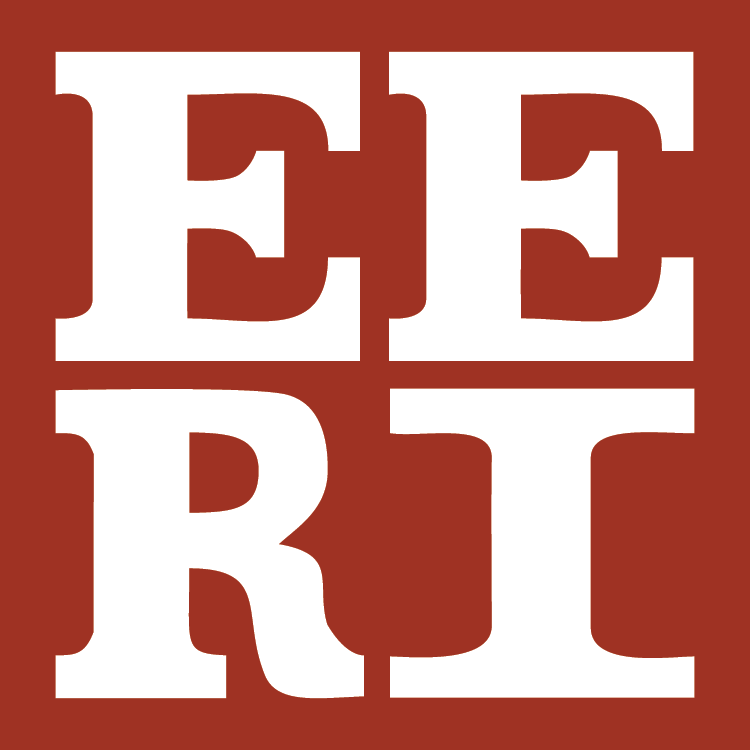
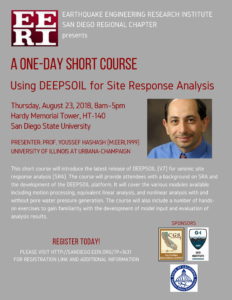
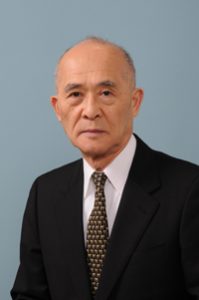 Organized by the Earthquake Engineering Research Institute (EERI) San Diego Chapter, University of California San Diego Extension, and Geo-Institute San Diego Chapter.
Organized by the Earthquake Engineering Research Institute (EERI) San Diego Chapter, University of California San Diego Extension, and Geo-Institute San Diego Chapter.